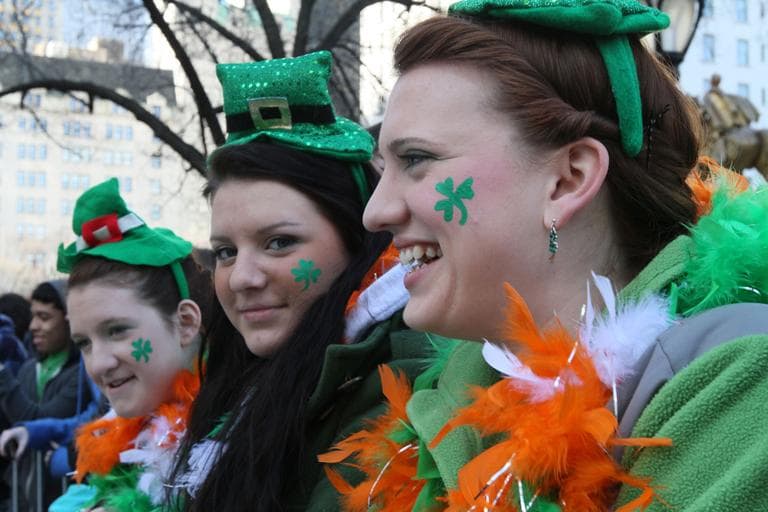Advertisement
How The Irish Became American
ResumeFor St. Patrick's Day, we’ll look at the "Irish way" of American immigration.

When the Irish came to America, it was big for Ireland and big for America. The Irish fled famine. By 1900 there were more Irish in United States than in Ireland. They moved into American cities, and paved the way for the waves of immigrants that followed – Italians, Jews, Poles… the world.
They came by the “Irish way,” says my guest today. Hyphenated Americans bringing home cultures to a new land. There’s a reason we still celebrate St. Patrick’s Day.
This hour, On Point: on the eve of St. Patrick’s Day, my guest James Barrett describes the Irish way of becoming American.
-Tom Ashbrook
Guests
James Barrett, a professor of History at the University of Illinois at Urbana-Champaign and author of The Irish Way: Becoming American in the Multiethnic City.
Jack Beatty, On Point news analyst.
From Tom's Reading List
The Boston Globe "A fast-paced tour of 150 years of the Irish-American experience, James R. Barrett’s “The Irish Way: Becoming American in the Multiethnic City’’ offers a wide-frame portrait of an immigrant group that helped define what it means to be an American."
The Washington Post "In “The Irish Way,” his acute and judicious account of the imprint of the Irish experience on American history, James R. Barrett suggests that these Irish were also the creators of an urban identity that became a model for millions of families and multitudes of ethnic groups working through difficult transitions. "
The Wall Street Journal "His richly detailed, often fascinating study focuses on the second- and third-generation Irish who were shaped more by life in America's largest cities than by rural life in the old country, and on later Irish immigrants, who arrived between the 1880s and 1920s. At the turn of the century, New York had the most Irish, followed by Philadelphia, Chicago and Boston. Mr. Barrett, who teaches at the University of Illinois, concentrates on New York and Chicago."
Excerpt: The Irish Way
[Use the navigation bar at the bottom of this frame to reformat the excerpt to best suit your reading experience.]
http://www.scribd.com/doc/85225414/Excerpt-Chapter-One-IRISH-WAY-Mar8
Playlist
“The Wind that Shakes the Barley” by The Chieftains
“The Hardest Mile” by Dropkick Murphys
“Paddy’s Lamentation” by Mary Black
“Black Friday Rule" by Flogging Molly
“A Nation Once Again” by The Dubliners
“Living in America” by Black 47
This program aired on March 16, 2012.